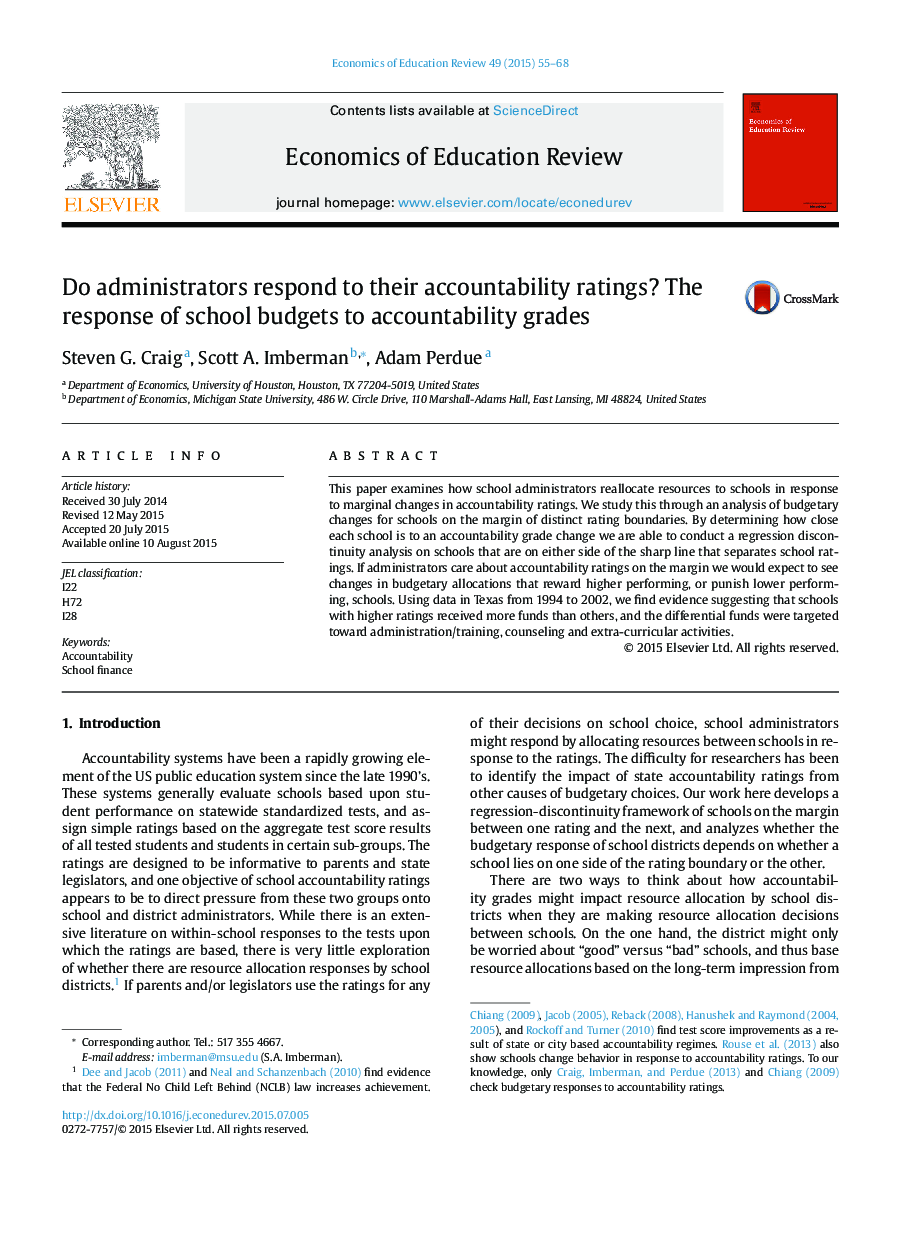| Article ID | Journal | Published Year | Pages | File Type |
|---|---|---|---|---|
| 354305 | Economics of Education Review | 2015 | 14 Pages |
•We study the impact of receiving a higher accountability rating on school expenditures and resource allocations.•Using a regression-discontinuity technique we estimate how receiving a higher rating affects total and categorical expenditures as well as student–teacher ratios.•We find evidence that schools that get a higher rating receive larger total funds on a per-student basis.•Schools with the second lowest rating put more spending into instruction and extra-curriculars relative to lowest.•Schools with second highest and highest ratings put more spending into administration and counseling relative to marginally lower ratings.
This paper examines how school administrators reallocate resources to schools in response to marginal changes in accountability ratings. We study this through an analysis of budgetary changes for schools on the margin of distinct rating boundaries. By determining how close each school is to an accountability grade change we are able to conduct a regression discontinuity analysis on schools that are on either side of the sharp line that separates school ratings. If administrators care about accountability ratings on the margin we would expect to see changes in budgetary allocations that reward higher performing, or punish lower performing, schools. Using data in Texas from 1994 to 2002, we find evidence suggesting that schools with higher ratings received more funds than others, and the differential funds were targeted toward administration/training, counseling and extra-curricular activities.
